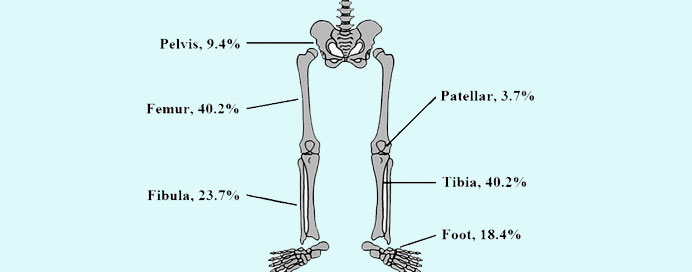Services / Dr. Ravi Bhanushali

A lower limb fracture refers to a break or crack in any of the bones in the leg, ankle, or foot. These fractures can result from various causes, including falls, sports injuries, car accidents, and direct trauma to the area.
Here’s an overview of lower limb fractures:
Anatomy: The lower limb consists of several bones, including the femur (thigh bone), tibia, and fibula (bones of the lower leg), as well as the bones of the ankle (tarsals), foot (metatarsals), and toes (phalanges).
Types of Fractures:
Symptoms: Symptoms of a lower limb fracture may include pain, swelling, bruising, deformity, tenderness, difficulty bearing weight on the affected limb, and in some cases, an audible snap or crack at the time of injury.
Diagnosis: Diagnosis of a lower limb fracture typically involves a physical examination, evaluation of the patient’s medical history, and imaging studies such as X-rays, CT scans, or MRI to confirm the presence and extent of the fracture.
Recovery and Rehabilitation: Recovery from a lower limb fracture can vary depending on the location and severity of the injury, as well as the treatment approach. Following treatment, rehabilitation may be recommended to help restore range of motion, strength, and function of the affected limb.
